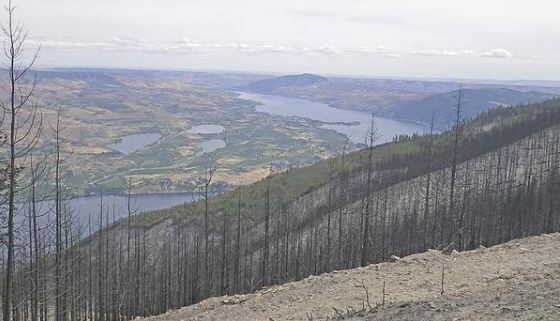Judge: Firebreak did not violate environmental law
Posted: August 14, 2017Source: Capital Press Mateusz Perkowski – Capital Press

Courtesy of U.S. Forest Service.
The Wolverine Fire in 2015 burned some 65,000 acres near Lake Chelan in Central Washington. An environmental group’s lawsuit against the U.S. Forest Service for building a fire line to protect rural hamlets has been thrownout.
The U.S. Forest Service did not violate federal environmental law by creating a 20-mile-long firebreak to stop a Washington state wildfire, a judge has ruled.
In 2015, a lightning strike in Washington’s Okanogan-Wenatchee National Forest ignited the Wolverine Fire, which eventually grew to nearly 100 square miles.
Due to a lack of natural barriers, the Forest Service decided to remove vegetation along a 300-foot-wide “community protection line” to stop the fire’s spread.
Forest Service Employees for Environmental Ethics, an environmental group, filed a lawsuit arguing the agency “logged” the firebreak without “environmental analysis or public participation” required by the National Environmental Policy Act.
According to the complaint, the Forest Service logged more than 100 acres of critical habitat for the northern spotted owl while creating the firebreak.
Removing trees and vegetation also “increased current and future fire risks” by disturbing soils, rendering them vulnerable to flammable invasive weeds, the plaintiff argued.
The environmental group claimed the Forest Service relied on an invalid regulation that exempts fire-fighting and other emergency actions from NEPA review.
The lawsuit asked a federal judge to enjoin the Forest Service from relying on that regulation in the future and to order the agency to “mitigate fully the environmental damage” from the firebreak.
Chief U.S. District Judge Thomas Rice has rejected the plaintiff’s arguments, ruling that the regulation allowing the Forest Service to react to emergencies without NEPA review is justifiable.
Rice also found that the Forest Service complied with the emergency regulation in creating the firebreak since the national forest’s supervisor determined that urgent action was necessary.
The judge disagreed with the plaintiff’s argument that forest fires are a predictable occurrence that shouldn’t qualify as emergencies, saying the claim is “contrary to common sense.”
“Just because wildfires are common and their general existence is foreseeable, the danger created by any specific wildfire is not so foreseeable and can create an emergency situation with little or no forewarning,” Rice said. “For example, in this case, the Wolverine Fire was started by lightning and spread quickly. The fire moved as fast as three miles per day, was threatening several communities, and had breached two containment lines. This clearly constitutes an emergency.”
